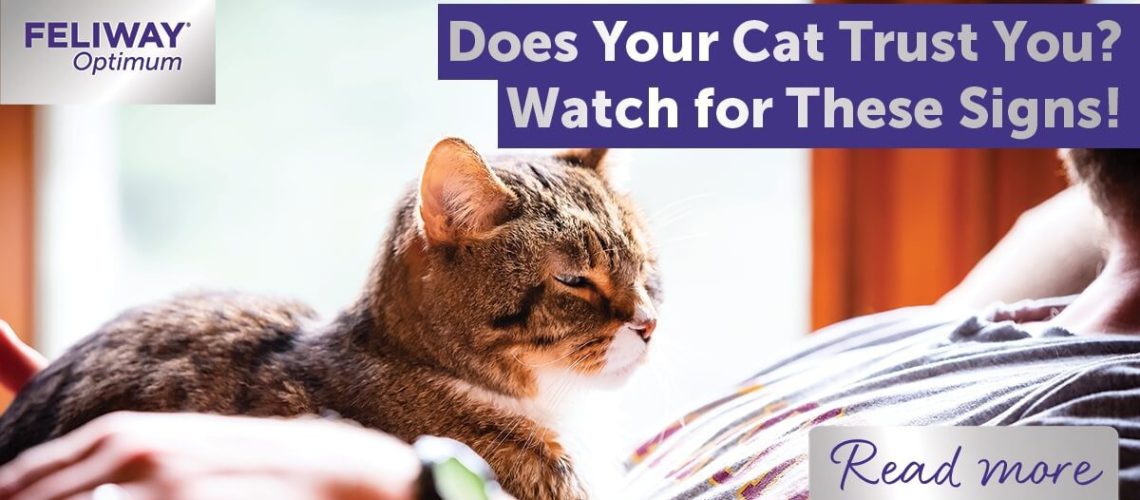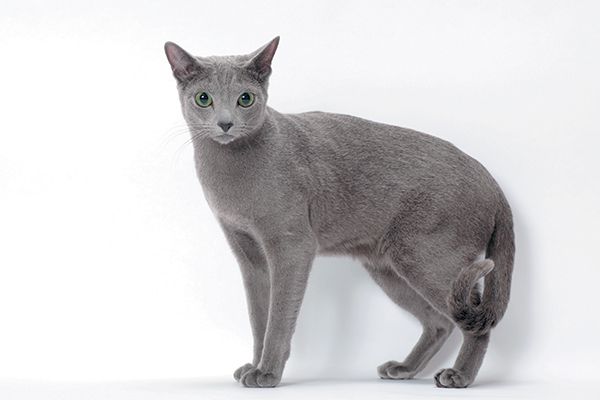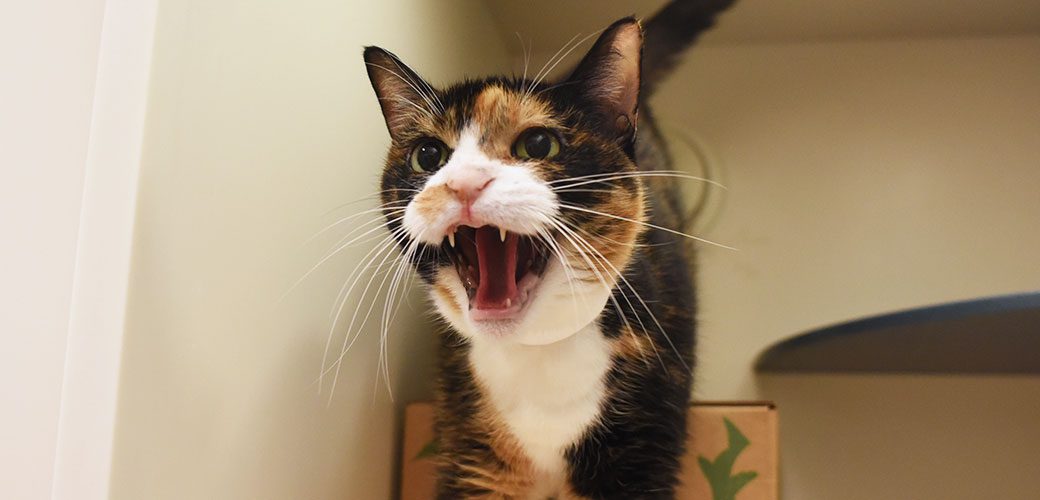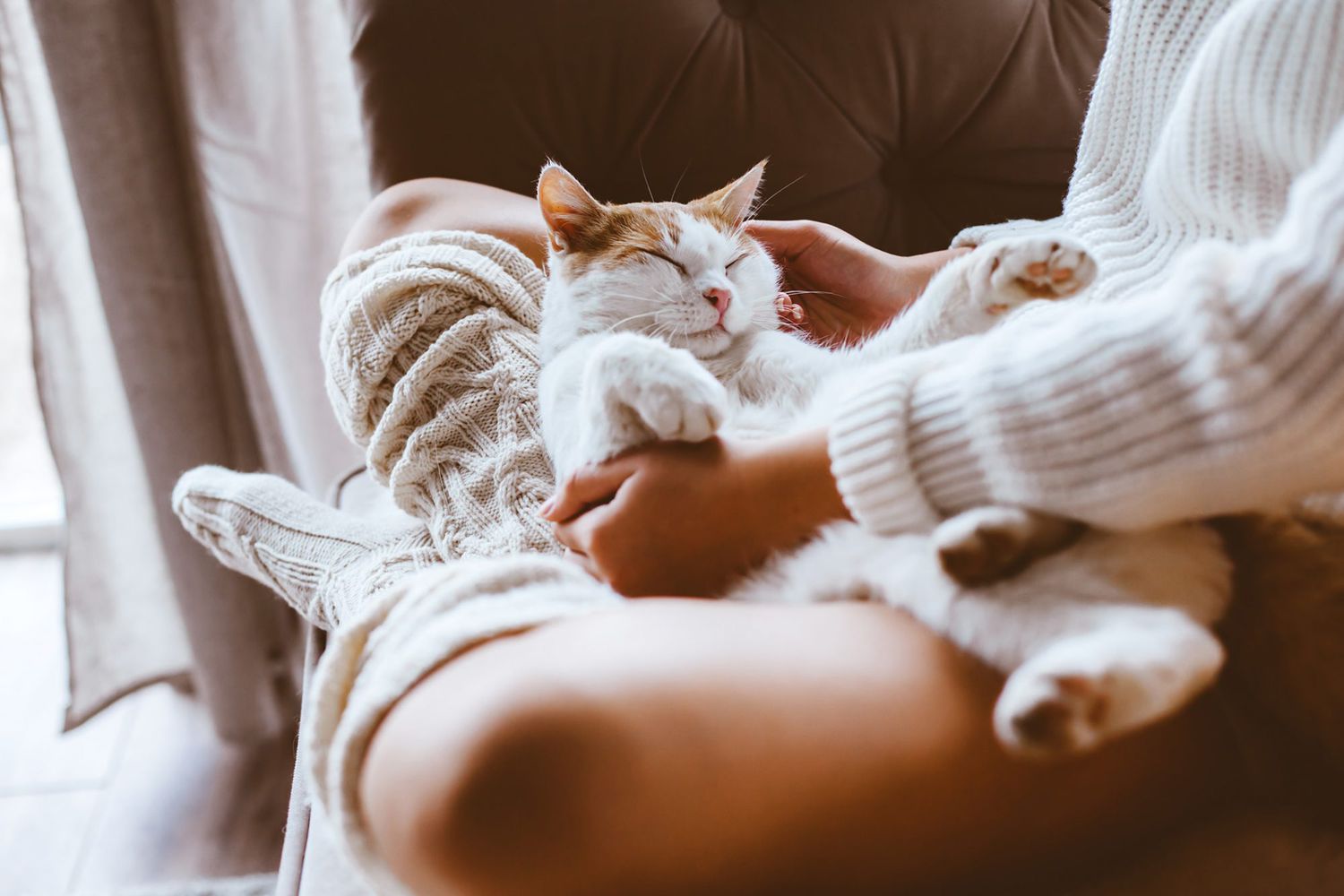Have you ever wondered what your cat is thinking? Cats are mysterious creatures, and sometimes it can be difficult to understand their emotions. But did you know that by learning to read the signs, you can actually help improve your cat's well-being? Understanding your cat's emotions is essential in ensuring a happy and healthy feline friend. In this article, we will delve into the topic of "Reading the Signs: Is Your Cat Feeling Blue?" and explore how you can decipher your cat's mood through simple observations. By the end of this article, you'll be equipped with the knowledge to better connect with your furry companion and provide them with the care they need. Let's dive in!
Key Takeaways:
- Cats can experience feelings of sadness and depression, just like humans.
- Signs of a blue cat may include decreased appetite, lethargy, and excessive grooming.
- Changes in the cat's environment or routine can contribute to their emotional state.
- Providing mental stimulation and engaging in interactive playtime can help lift a cat's mood.
- If a cat's behavior changes significantly or persists for an extended period, it is important to consult a veterinarian for proper diagnosis and treatment.
Understanding Your Cat's Emotions: Signs of Sadness
Recognizing Emotional States in Cats
As a cat owner, it is important to understand your feline friend's emotions. Just like humans, cats can experience a range of emotions, including sadness. However, cats may not express their feelings in the same way we do. They rely on subtle cues and body language to communicate how they are feeling.
One of the key signs of sadness in cats is a change in behavior. If your usually playful and affectionate cat becomes withdrawn or avoids interaction, it could be an indication that they are feeling down. Other signs to look out for include decreased appetite, excessive grooming, and changes in sleeping patterns.
The Importance of Addressing Sadness in Cats
Sadness can have a significant impact on your cat's overall well-being and quality of life. Just like humans, prolonged periods of sadness can lead to depression and other health issues in cats. It is essential to address any signs of sadness promptly to ensure your furry friend remains happy and healthy.
By recognizing and addressing your cat's emotions, you can create a safe and nurturing environment that promotes their emotional well-being. Understanding the signs of sadness allows you to take appropriate action and provide the support your cat needs during difficult times.
The Importance of Recognizing Your Cat's Feelings
Bonding with Your Cat through Emotional Awareness
Building a strong bond with your cat involves more than just providing food and shelter. Recognizing your cat's feelings allows you to develop a deeper understanding of their needs and desires. By acknowledging their emotions, you can strengthen the connection between you and your feline companion.
Cats are highly perceptive creatures who can pick up on human emotions. When you are aware of your cat's feelings, you can create a positive and supportive environment that promotes their emotional well-being. This emotional connection not only benefits your cat but also enhances your own happiness and satisfaction as a pet owner.
Enhancing Your Cat's Quality of Life
Understanding your cat's emotions is crucial for providing them with the best possible quality of life. By recognizing signs of sadness or unhappiness, you can take steps to address any underlying issues and improve their overall well-being.
When you prioritize your cat's emotional needs, you create an environment where they feel safe, loved, and understood. This can lead to a happier and healthier cat who is more likely to exhibit positive behaviors and have a higher quality of life.
How to Tell If Your Cat Is Feeling Sad or Unhappy
Observing Changes in Behavior
Your cat's behavior can provide valuable clues about their emotional state. Look out for any significant changes in their usual patterns of behavior. If your typically active and playful cat becomes lethargic or withdrawn, it may be a sign that they are feeling sad or unhappy.
Other behavioral changes to watch for include decreased appetite, excessive sleeping, hiding more often than usual, or avoiding social interaction. These changes may indicate that something is bothering your cat emotionally.
Paying Attention to Body Language
Cats communicate through body language, so understanding their non-verbal cues is essential in deciphering their emotions. When cats are sad or unhappy, they may display certain body language signals such as:
- Tail held low or tucked between the legs
- Ears flattened against the head
- Avoiding eye contact
- Hunched posture
- Purring less or not at all
By paying attention to these subtle cues, you can gain insight into your cat's emotional state and take appropriate action to address their feelings of sadness or unhappiness.
Common Signs of a Blue Cat: What to Look Out For
Physical Symptoms:
If you suspect your cat may be feeling blue, there are several physical signs to look out for. One common indicator is a change in appetite. A blue cat may eat less or even refuse food altogether. Another physical symptom is weight loss or gain, as well as changes in grooming habits. If your usually well-groomed feline friend starts neglecting their coat, it could be a sign of unhappiness.
Additionally, keep an eye out for any unusual behaviors such as excessive meowing, hiding more often than usual, or decreased energy levels. These can all be signs that your cat is not feeling like their usual self.
Emotional Indicators:
In addition to physical symptoms, there are also emotional indicators that can suggest your cat is feeling down. One common sign is increased aggression or irritability towards other pets or family members. Your cat may also become more withdrawn and avoid interaction with you or other household members.
Another emotional indicator of a blue cat is excessive sleeping or lethargy. If your normally active and playful kitty seems uninterested in their favorite toys or activities, it could be a sign that they are experiencing sadness or depression.
Tips for Observation:
- Pay attention to any changes in eating habits and weight.
- Note any differences in grooming behavior.
- Observe for increased meowing, hiding, or decreased energy levels.
- Watch for signs of aggression or withdrawal from social interactions.
- Take note if your cat shows disinterest in previously enjoyed activities.
Behavior Changes in Cats: Indicators of Sadness
When it comes to cats, behavior changes can often be a clear indicator that something is amiss. If your feline friend starts exhibiting unusual behaviors, it's important to pay attention and address the underlying issue.
Changes in Eating Habits:
One common behavior change in cats experiencing sadness is a loss of appetite. Your cat may start eating less or even refuse food altogether. On the other hand, some cats may turn to overeating as a coping mechanism. Both extremes can indicate emotional distress.
Sleeping Patterns:
If you notice significant changes in your cat's sleeping patterns, it could be a sign of sadness. Some cats may sleep excessively, while others may have trouble sleeping and appear restless during the night. Keep an eye out for any disruptions in their usual sleep routine.
Tips for Addressing Behavior Changes:
- Offer a variety of high-quality food options to entice your cat to eat.
- Create a calm and comfortable sleeping environment for your cat.
- Establish a consistent daily routine to provide stability and reduce stress.
- Engage in interactive play sessions with your cat to stimulate their mind and body.
- Provide hiding spots or safe spaces where your cat can retreat when feeling overwhelmed.
Creating a Happy Home for Your Feline Friend: Tips and Tricks
Your home environment plays a crucial role in your cat's overall happiness and well-being. By making some simple adjustments, you can create a space that promotes joy and contentment for your feline friend.
Designated Play Areas:
Cats need mental stimulation and physical exercise to thrive. Set up designated play areas in your home where your cat can engage in interactive play sessions. Use toys that encourage hunting instincts, such as feather wands or puzzle toys with treats hidden inside.
Vertical Space:
Cats love to climb and explore their surroundings from high vantage points. Provide vertical spaces such as cat trees or shelves where your cat can perch and observe their territory. This not only satisfies their natural instincts but also gives them a sense of security.
Tips for Creating a Happy Home:
- Offer a variety of toys that cater to different play styles.
- Provide scratching posts or boards to satisfy your cat's need to scratch.
- Ensure there are comfortable resting spots throughout the house.
- Keep litter boxes clean and easily accessible.
- Create a peaceful environment by minimizing loud noises and sudden disruptions.
Activities and Toys That Can Boost Your Cat's Mood
Engaging your cat in stimulating activities and providing them with appropriate toys can significantly improve their mood and overall well-being. Here are some activities and toys that can help boost your cat's mood:
Puzzle Toys:
Puzzle toys challenge your cat's problem-solving skills while rewarding them with treats or kibble. These toys keep cats mentally stimulated, preventing boredom and promoting a happier state of mind.
Interactive Play Sessions:
Spend quality time engaging in interactive play sessions with your cat using wand toys, laser pointers, or feather teasers. Not only does this provide physical exercise, but it also strengthens the bond between you and your feline companion.
Tips for Mood-Boosting Activities:
- Rotate toys regularly to keep your cat's interest piqued.
- Set aside dedicated playtime each day to engage with your cat.
- Experiment with different types of toys to find what your cat enjoys most.
- Provide opportunities for your cat to explore and hide, such as cardboard boxes or tunnels.
The Role of Proper Nutrition in Keeping Your Cat Happy
A well-balanced diet is essential for maintaining your cat's physical and mental health. Proper nutrition can significantly impact their mood and overall happiness. Here are some key factors to consider when it comes to your cat's diet:
Quality Ingredients:
Ensure that the food you provide for your cat contains high-quality ingredients. Look for options that list real meat as the primary ingredient and avoid those with fillers or artificial additives. A nutritious diet supports optimal brain function and emotional well-being.
Adequate Hydration:
Cats need access to fresh water at all times. Dehydration can lead to lethargy and negatively affect their mood. Consider providing a water fountain or multiple water bowls throughout the house to encourage regular hydration.
Tips for Proper Nutrition:
- Consult with a veterinarian to determine the best diet for your cat's specific needs.
- Measure food portions according to feeding guidelines to prevent overfeeding or underfeeding.
- Incorporate wet food into your cat's diet, as it helps maintain hydration levels.
- Avoid sudden changes in diet, as this can cause digestive upset and stress.
Knowing When to Seek Professional Help for Your Depressed Cat
While many cases of feline sadness can be addressed with environmental and lifestyle changes, there may be instances where professional help is necessary. Here are some signs that indicate it's time to seek assistance from a veterinarian or animal behaviorist:
Persistent Symptoms:
If your cat's sadness persists despite your best efforts to improve their environment and engage them in stimulating activities, it may be a sign of an underlying medical condition. A professional can conduct a thorough examination to rule out any physical health issues.
Sudden Changes in Behavior:
If your cat exhibits sudden and severe behavior changes, such as aggression or self-harm, it is crucial to seek immediate professional help. These behaviors can indicate a more serious underlying problem that requires expert intervention.
Tips for Seeking Professional Help:
- Research and choose a reputable veterinarian or animal behaviorist with experience in feline behavior.
- Prepare a list of observed symptoms and behaviors to provide accurate information during the consultation.
- Follow the recommended treatment plan provided by the professional and communicate any concerns or changes in your cat's condition.
In conclusion, it is important to pay attention to the signs that your cat may be feeling sad or blue. By understanding their behavior and providing them with love and care, we can help our feline friends feel happier and more content.
How do you read a cat's emotions?
Cats tend to purr when they are content, even while they are eating. However, there are instances where a cat may purr when they are anxious or unwell, using the purring as a way to comfort themselves, similar to how a child sucks their thumb. On the other hand, growling, hissing, or spitting indicates that a cat is irritated, scared, angry, or showing aggression.
How do cats show sadness?
Here are some common indicators of feline depression: Reduced appetite or alterations in eating patterns. Altered body language, such as flattened ears, tucked tail, or raised fur. Increase or decrease in meowing frequency, and producing low-pitched, mournful meows.
What are 4 signs your cat is suffering?
Signs that a cat is experiencing pain include a decrease in interest in activities such as playing, socializing, and exploring, as well as hiding and withdrawing. They may appear to limp and be more sensitive to touch in certain areas of their body. There may also be a reduction in their overall movement and activity level.
Why do cats rub against you?
Rubbing is a way for cats to show affection and claim ownership. By transferring their scent onto you through full-body rubs or gentle nuzzles, cats are declaring that you belong to them and they want your full attention.
Can cats tell when you're sad crying?
Cats have a keen ability to observe and intuitively understand human emotional cues. This means that they can also sense when their owners are feeling down or depressed.
What do cats think when you cry?
Cats may not have the emotional intelligence to understand the need for comfort when you're sad, but they do understand that you are giving them attention. If your cat connects your sadness with love and attention, it will come to you when you are feeling down.

















